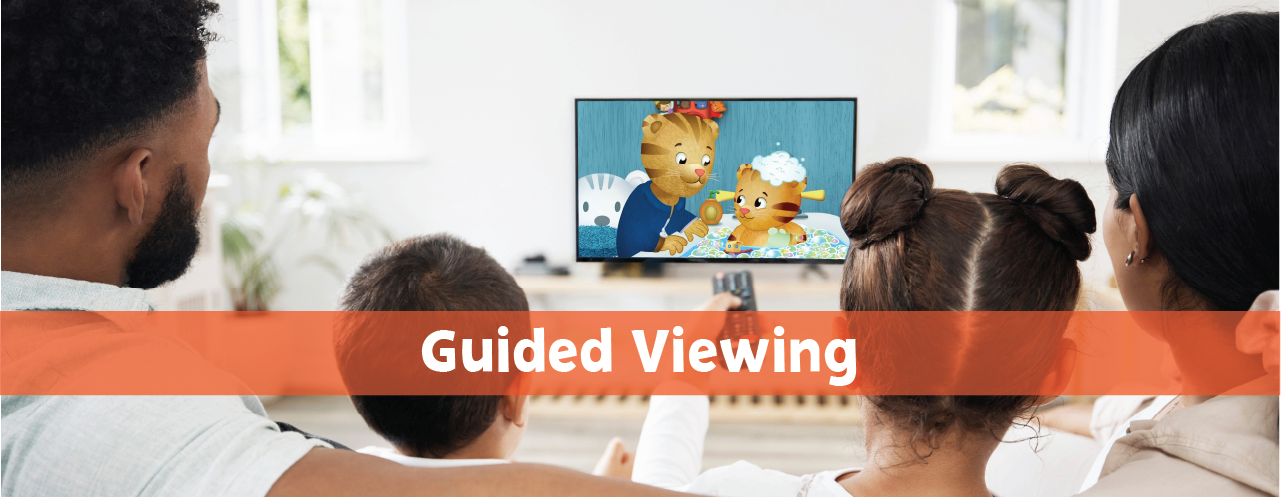
Maximize Learning with Guided Viewing
Help your child connect, reflect, and learn with television programming.
What is Guided Viewing?
Guided viewing helps children connect with the characters and stories on television while gaining both social-emotional and academic skills. By actively watching and discussing programs together, parents and caregivers can support problem-solving, reflection, and application in everyday learning.
Learn More About Guided Viewing Principles and Practices
The Four Stages of Guided Viewing
Guided viewing happens in four simple stages, designed to guide children through identifying with characters and applying lessons from television to real life:
- Identify: Help your child notice similarities between themselves and characters. Example: “Princess Presto is learning to read just like you!”
- Connect: Observe emotional reactions and discuss why characters feel a certain way.
- Think and Learn: Reflect on how characters solve problems and relate it to your child’s experiences.
- Apply: Encourage your child to use strategies from the show in their own activities or learning.
Download Instructions for Guided Viewing
Co-Viewing Practices
Co-viewing encourages active learning by watching together and discussing key points. Extend learning through:
- Post-program discussions
- Hands-on activities at home
- Student reporting or mini news clips
Make the Most Out of Screen Time
Guided Viewing for Early Learners
Guided viewing is especially effective for children ages 8 and under. Start with programs like SuperWhy! and follow the four-step process to support both social-emotional and academic growth. After watching, parents can extend learning with activities using household items or digital resources.
- Identify: Notice similarities between your child and the characters
- Connect: Discuss emotional responses
- Think and Learn: Explore problem-solving strategies
- Apply: Reinforce learning through follow-up activities
Download Conversation Starters for PBS KIDS Shows Worksheet
Need Help or Have Questions?
Email the OETA Education team at Education@OETA.tv to learn more about guided viewing and other family learning resources.

